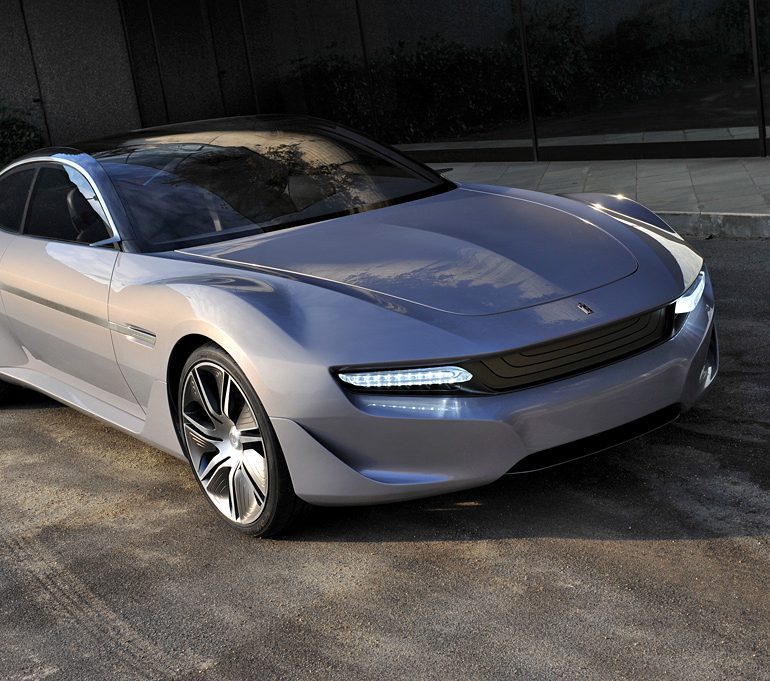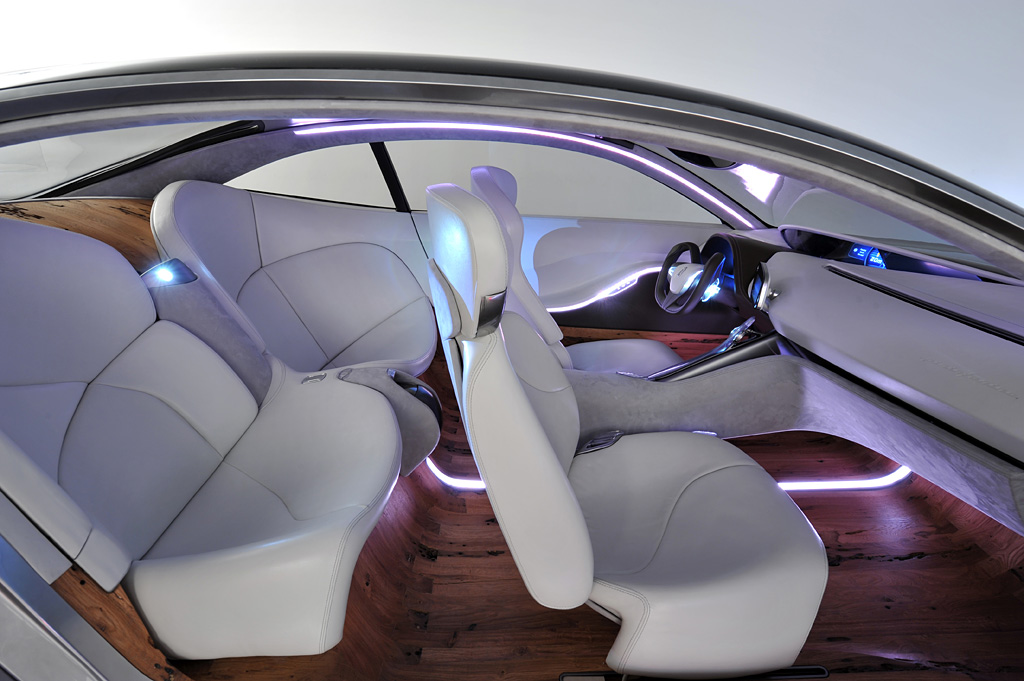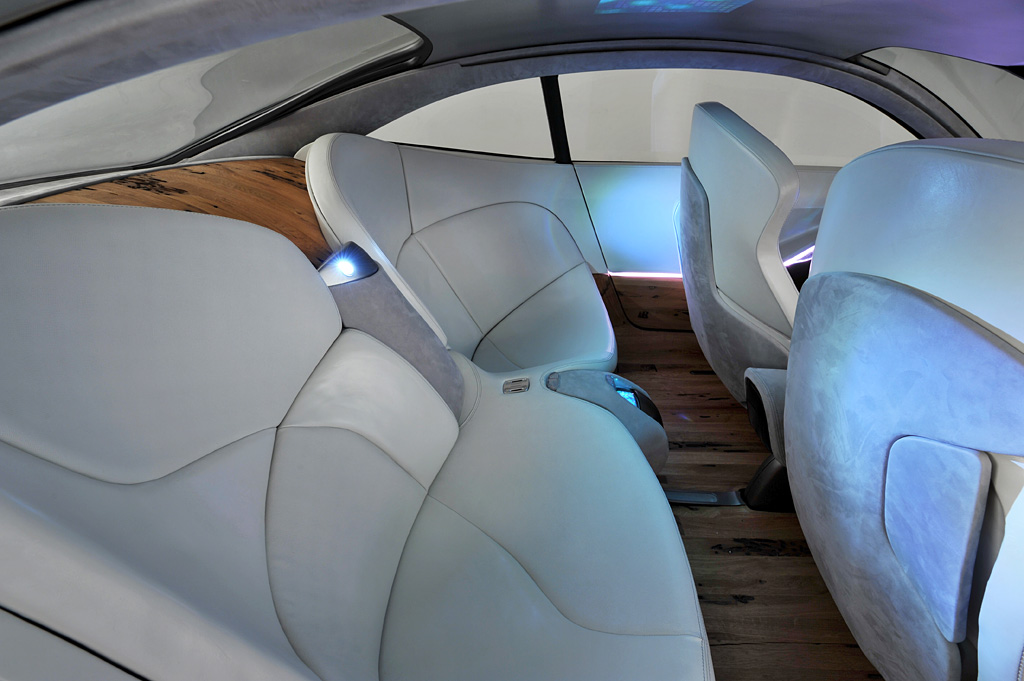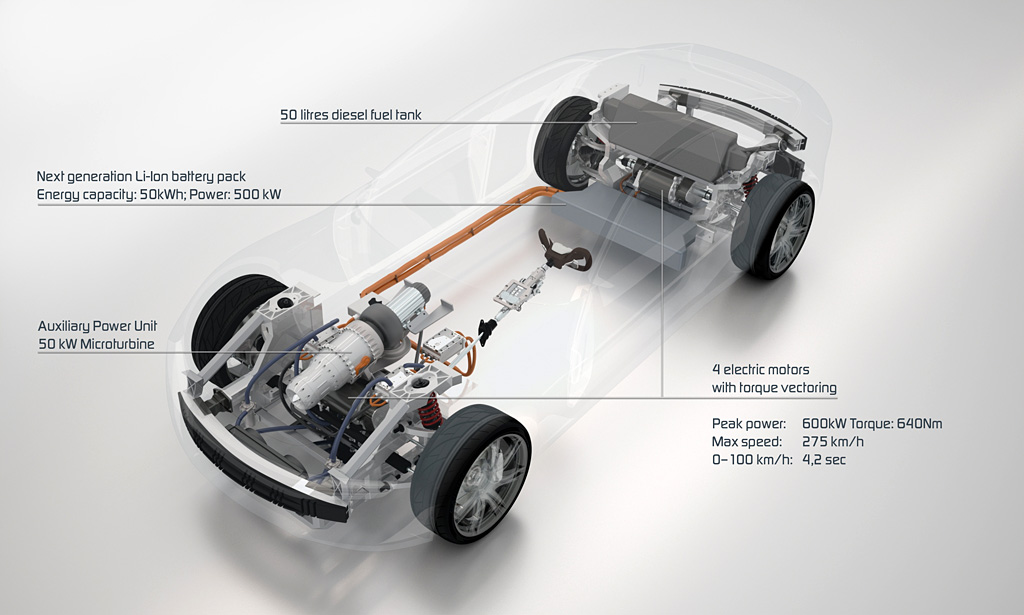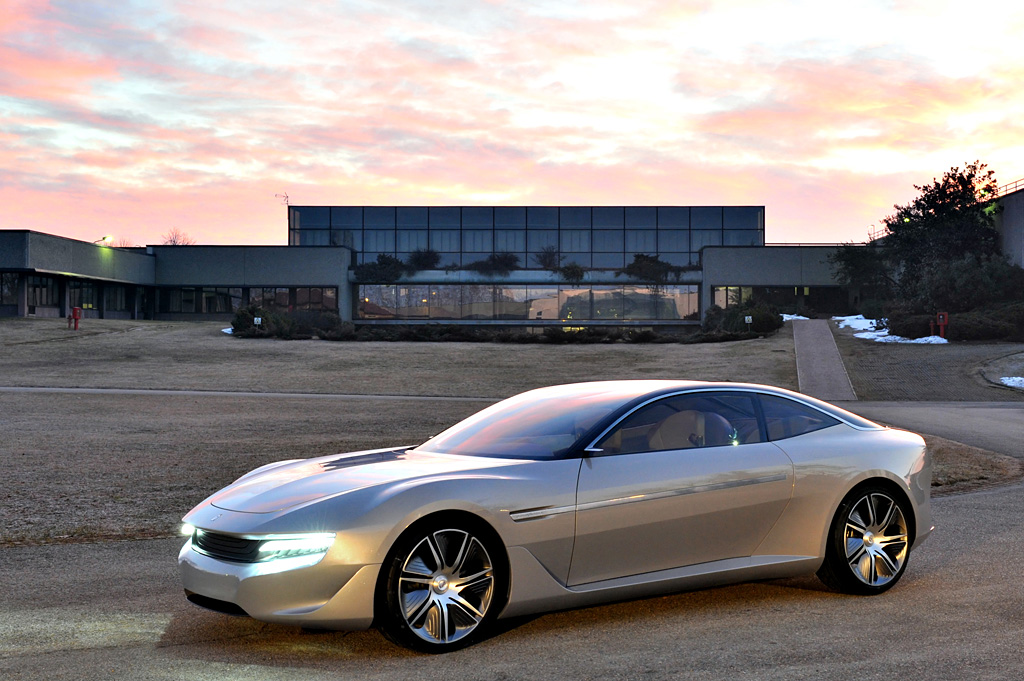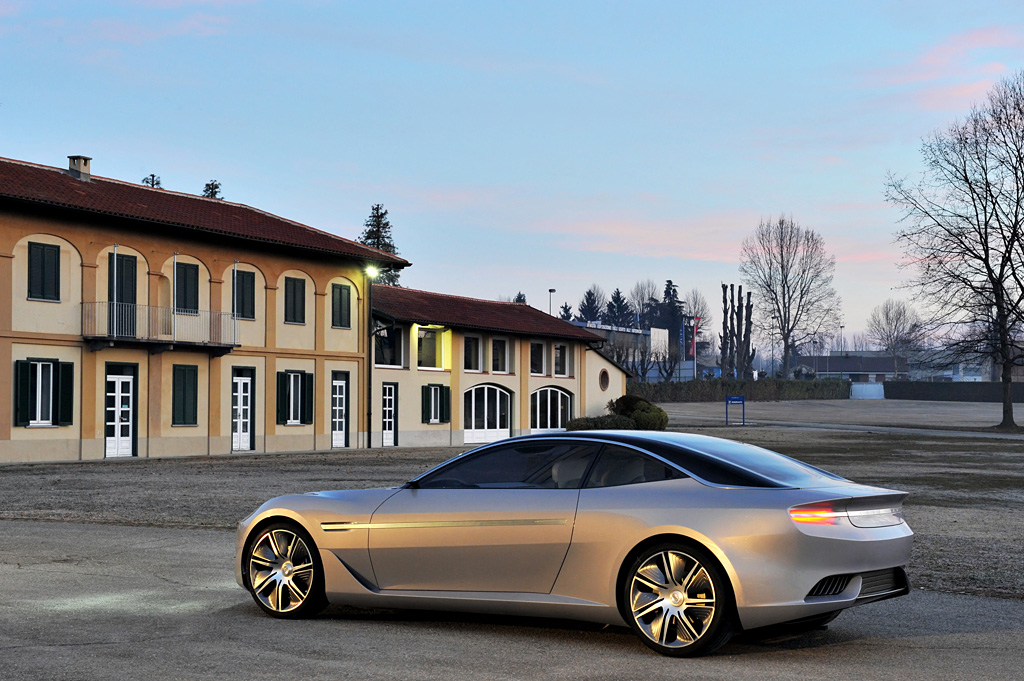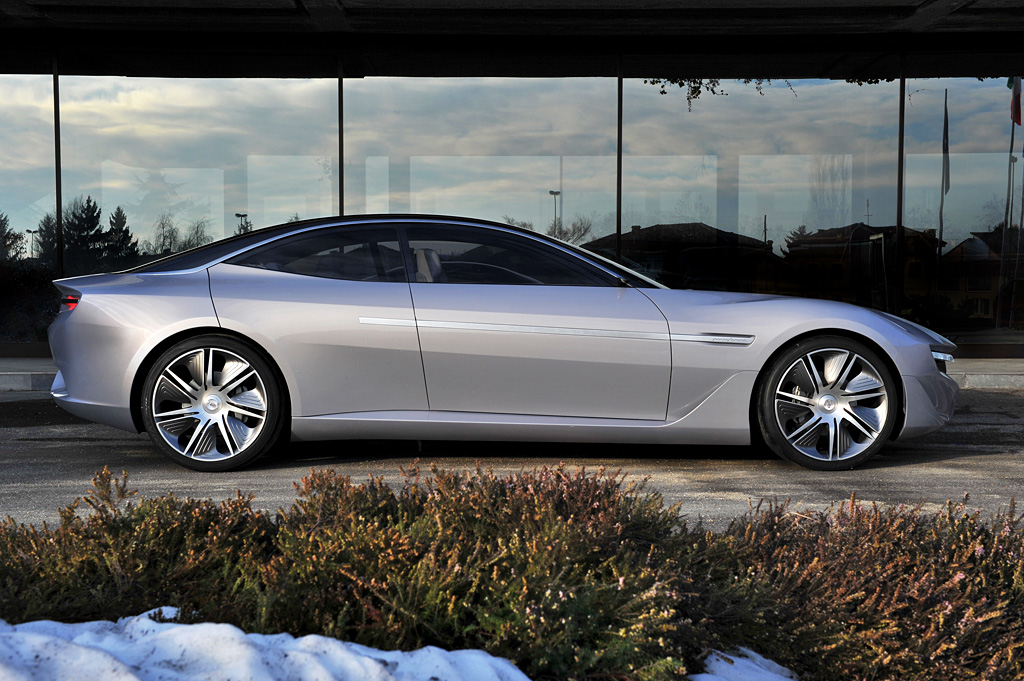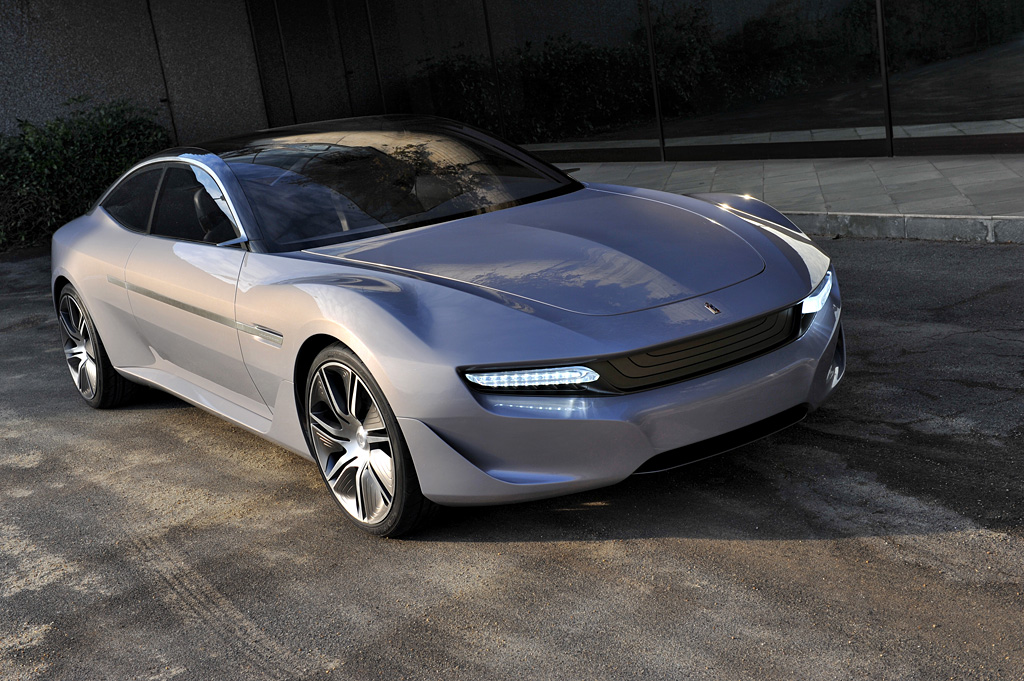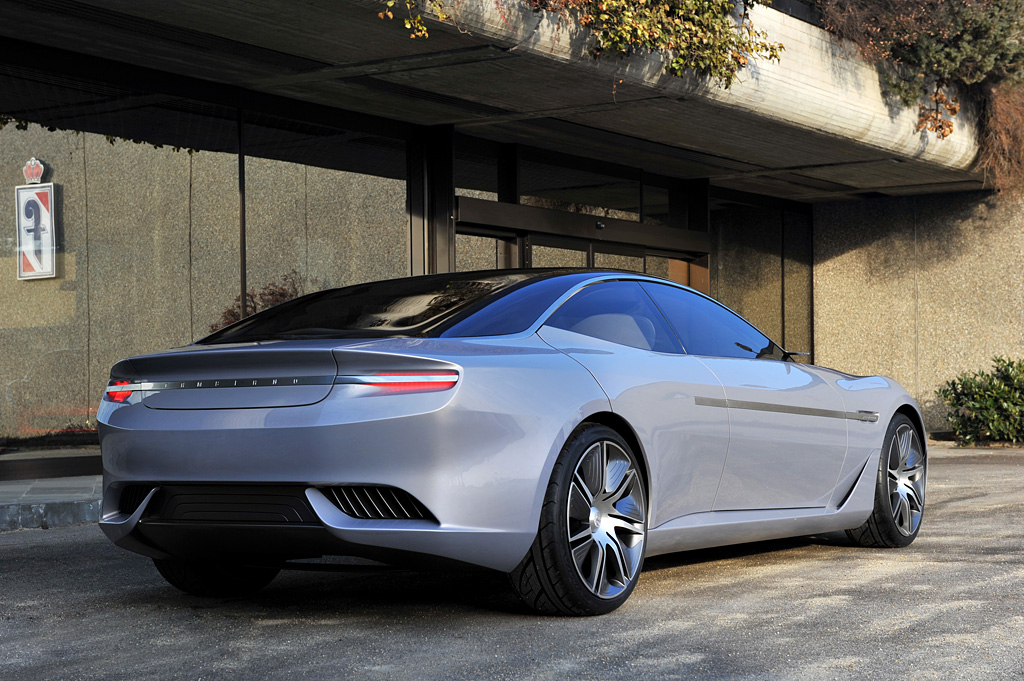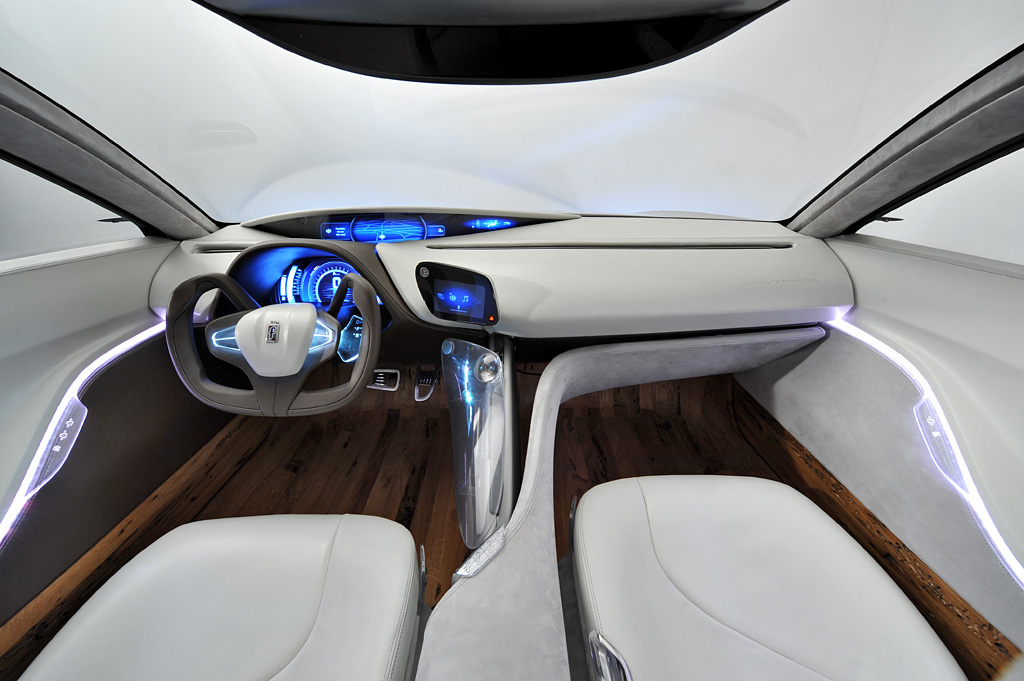2012 Pininfarina Cambiano
It is a new approach to luxury in the car, according to Pininfarina’s school of thought. The Cambiano is launched today, a concept car that is elegant and sporty, refined and comfortable. An enticing combination of pure, cutting edge design and uncompromising engineering that respects the environment in both in the engine and in the choice of materials.
The Cambiano is an expression of Pininfarina today, embodying all the company’s skills in terms of style, planning and research in the field of sustainable mobility. It is no coincidence that its chosen name is that of the town where Pininfarina has its headquarters. In 2012 the company celebrates a dual anniversary: the 30th anniversary of the Style Centre, which was set up in Cambiano in 1982 as “Pininfarina Studi e Ricerche”, and the 10th anniversary of the Engineering Centre, which was inaugurated there in 2002, adding contract engineering to its activities of styling and niche design/production, and concentrating cutting edge technological tools and a team of outstanding specialists in one place.
The luxury sports saloon embodies the innovative archetypes of Pininfarina design in full. Another example was a milestone in the company’s history, the Florida II, a concept car of 1957 which the founder Pinin Farina conceived and built for his own personal use, a saloon-coupé with an architecture and line that influenced global production for many years. In a way, it was Pininfarina’s first real concept car.
Today, in 2012, the Cambiano redefines and reinterprets the ideas that are the basic tenets of Pininfarina design: harmonious proportions, taut lines and fluid surfaces, and a simple element that extends all along the side to underline its dynamism. The result is a very strong visual impact, emphasised by an extremely pure, aerodynamic shape based on essential and purely functional stylistic elements.
The Cambiano breaks with the general trend of design that is overloaded with elements, and confidently embraces the return of pure form as the absolute value, in the best “tradition” of Italian Style, reflecting the deepest essence of Pininfarina Design.
The Cambiano reveals its true character at first glance, starting from the unconventional layout of the doors: on the driver’s side the car is a sports coupe with a single door, but on the passenger side there are two doors that open from the centre with no central pillar. This simplifies access and makes the most of the spacious, luminous passenger compartment.
The Cambiano is an expression of the car as a global project, and there is total consistency between every detail of the exterior and interior design, and between the colours, materials and the use of technology. Elegance and formal harmony blend in the association of complementary values: balance and contrast, the relation between full and empty, between solid and transparent. Formal purity and simplicity become elements of iconic design.
The proportions of the Cambiano convey dynamism and fluidity, thanks to the low tapered front and the light, fleeting rear-mounted cabin. The body of the car is one of simple, solid volumes, with large taut but sensual surfaces, enhanced by the innovative golden grey colour and iridescent blue reflections specifically developed for this project by Standox (r). The metal inserts in the sides are a new take on decorative mouldings and they continue all along the side glazing, incorporating the lighting and opening functions of the doors. The large honeycomb roof is ethereal and transparent and completes the body of the car, imparting a sense of solidity and of elegant refinement.
The front, with its clean, essential design, returns to a motif that is typical of Pininfarina: headlights incorporated into the grille and protruding wheel arches. The grille also incorporates a dynamic opening that is an air inlet for the turbo. The LED front headlights are simple “blocks” of pure, crystalline light. The tail lights and side indicators are almost intangible: only the light exists, appearing as if by magic on the surface of the bodywork. In the purest spirit of Pininfarina, the essentiality of the form becomes a very elegant expression of pure function.
The light is an integral part of the Cambiano design concept, inside and out. The relationship with natural light is simplified by the panoramic roof, which is translucent in some areas and transparent in others. With a carbon honeycomb structure mounted between the outside glass and a polycarbonate inner lining, the roof enhances visibility in the car – heightening the sense of luminosity and space inside.
The light is not only a natural element, but also emphasises the sensory experience of the passenger compartment thanks to a refined and functional lighting system, which exploits light channels inserted into the ceiling, the doors and the floor. The Cambiano is the first car to incorporate into the passenger compartment a contemporary video-art projection, created specifically by the Spanish artist Javier Fernandez with a very personal language of manipulated, overlapping images. The work is projected onto the ceiling where it can be enjoyed by rear seat passengers during the drive. Contemporary art, a pre-eminent feature of luxury, is thus incorporated into the concept of the car, leaving behind its elite aura and becoming accessible.
The complementarity between apparently contrasting elements is also expressed in the interior. Natural materials contrast with sophisticated details, and the physicality of pure matter with the immateriality of the most advanced forms of communication, which simplify the interaction between the driver and the car and his surroundings. It is a fascinating mixture of luxury craftsmanship and innovation: exclusive materials and outstanding manual work combined with the use of advanced technologies and innovative concepts.
Elegant and modern design converges in the interior with comfort, ergonomics and environmental sustainability, maintaining the same stylistic approach of the exterior. Fluid, sensual surfaces, a light, essential environment, with clearly defined functional zones: interactive controls and surfaces turned towards the driver, a more comfortable and tactile area for the other passengers. A fine, light facia, light but enveloping front seats suspended between the consoles and the sill, in a delicate balance between solid and hollow designed to create tension. The asymmetrical access to the passenger compartment determines the leaf structure of the two rear seats, which are almost suspended in the car, where occupants enjoy an environment that is made more comfortable and refined by the generous legroom. The interior is upholstered with Foglizzo leather, personalised in certain points with a special diamond point punched patter. The leather usedin the Cambiano was chosen from the Pininfarina Leather Collection for Foglizzo, a collection of personalised natural and imitation leathers developed by the two Turin companies. The uprights and door panels are upholstered with polylactic acid, a plastic derived from sugar substances, treacle and milk serum, a solution that reduces the use of petroleum.
Like the entire lower part of the passenger compartment, the perfectly flat floor is made of recycled wood. This is the strongest and most typical element of the interior of the Cambiano, the fusion of matter and transformation, technological research and respect of cultural and environmental values. A choice dictated by the discovery of a wonderful material, which is both poor and noble: the wood of the “briccole”, the poles of European oak used to indicate the navigation channels and moorings inside the Venice lagoon.
Riva1920, a historical Italian producer of solid wood furniture that has been working with Pininfarina Extra for over ten years, had the brilliant idea of recuperating the wood of these 12 metre poles, thousands of which are replaced every year. The wood is marked by the lagoon water and by marine microorganisms, which come alive again, creating a new manufact that is destined to last. Following the same principle, Riva1920 has created all the wooden elements for the interior of the Cambiano, using numerical control milling machine followed by manual final polishing and oiling. The result is surprising and evocative. The material is about to embark on its third lease of life, and it reveals its unique texture and the wear and tear of passing time: the holes made by the marine molluscs are still visible on the surface. Not only. This complex, delicate technological craftsmanship makes the interior of the Cambiano something unique that expresses an outstanding level of creativity and experience, thanks to this eco-friendly re-use of a natural, discarded material with the enormous evocative force of the huge cultural, emotional and artistic dimension attributed to Venice all over the world.
The atmosphere of extreme refinement in the car is underlined by another precious detail in the instrumentation: the timepiece manufactured in Limited Edition by the Swiss watchmaker Bovet 1822. This “Cambiano” Chronograph designed by Pininfarina can be removed from the dashboard and worn as a wristwatch, or used as a sports timer and even a table clock, due to its convertible concept.
The instrumentation of the driving position is divided into three priority zones according to use: the car’s functions and performance, navigation and comfort, multimedia and connections. The main display shows the power delivered by the 4 electric motors backed up by the turbine, the battery charge and the fuel gauge, the total range and the range with all-electric operation, the driving mode (Ecocity, Snow/Ice, Efficiency, Sport, Drifting), and the speedometer. The driver monitors the navigator, the warning messages and the multimedia functions on the secondary display. The “swap” control transfers the navigator and other functions to the central display and vice versa. And a touch pad gives access to the interactive instrumentation and climate control. The driver controls the lights and the gear selector on the steering wheel, while the “Start” control and a device holder are on the centre tunnel.
The attention paid to detail is evident from the work carried out on the tyres. For the Cambiano Pininfarina specifically developed with Fate, Argentina’s largest tyre production and exporting company, the first tyre for top of the range cars, Concept Tyre, from Eximia by Pininfarina. Fate’s experts engineers contributed with precise studies and creative capability, making possible a further step in design, technology and security. Concept Tyre, from Eximia by Pininfarina, synthesizes the last progresses in the search of perfection: environmental care, superior constructive quality, and an advanced esthetic model.
In Detail
| type | Concept / Prototype Car |
| released at | 2012 Geneva Motor Show |
| built at | Italy |
| production | 1 |
| engine | 4 Electric Motors w/Diesel Generator |
| position | In-Wheel |
| power | 600 kw / 804.6 bhp |
| bhp/weight | 474.69 bhp per tonne |
| body / frame | Carbon & Aluminum Chassis |
| driven wheels | 4WD |
| curb weight | 1695 kg / 3737 lbs |
| weight distro | 48 % / 52 % |
| length | 5040 mm / 198.4 in |
| width | 2000 mm / 78.7 in |
| height | 1360 mm / 53.5 in |
| top speed | ~275 kph / 170.78 mph |
| 0 – 100 kph | ~4.2 seconds |
| drag | 0.28 Cd |
| emission | 45 g/km |
| fuel capacity | 50 litres or 13.20 gal. |


